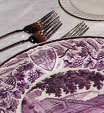 “What’s the rush?”
“What’s the rush?”
That might be the question more overscheduled Holy Cross students will ask themselves, if the latest innovation from Holy Cross Dining Services catches on.
Last fall, the Slow Food movement came to Mount St. James, and early reviews are getting “four stars.”
Slow Food is a concept developed by renowned food and wine writer Carlo Petrini in 1986 in response to the opening of a spate of fast-food franchises in Rome. As opposed to fast food and all it implies, Petrini advocated the value of sitting down and enjoying your meal with company. The movement also promotes the importance of quality ingredients, fresh and local produce, traditional dining, and a variety of tastes.
A Slow Food dinner also allows for plenty of time for conversation, something often lost in the average college student’s meal plan.
Art Korandanis, director of auxiliary services at Holy Cross, was inspired after hearing Petrini at a lecture at the University of New Hampshire, and brought the concept to Dining Services. Korandanis, along with Holy Cross resident professional chefs Linda Nardella, director of dining services and Marty Dudek, assistant director of dining, tailored a program for Holy Cross students so they would experience “what food used to be and what it should be” says Dudek — as opposed to, say, the more typical student experience of grabbing a slice of pizza on the go.
As a result, Holy Cross Dining began offering private five-course meals in a curtained area divided from the ordinary hustle and bustle of Kimball Dining Hall. As the courses are served, a chef explains what is on the menu and why specific ingredients were chosen. Up to 24 guests can be accommodated. Among the first to experience a Slow Food meal were Fran Taylor, director of wellness programming, and members of the Students for Responsible Choices peer education group.
“It was extravagant,” Taylor said of the private meal served on Wedgwood china and linen tablecloths. One student told Taylor: “I never thought I could spend two hours on a meal. But when we got there we wanted to relax, enjoy the moment!”
At one of the four fall dinners in Kimball, roasted vegetable gnocchi with a saffron cream sauce was served. Dudek likes the opportunity to talk about an ingredient like saffron, which he says “is one of the world’s most expensive spices and college students do not even know what it tastes like.” Fresh and local produce are always used. For the first Kimball dinner — with a Thanksgiving theme — the roast turkey came from Bob’s Turkey Farm in nearby Lancaster.
In addition to exposing the student body to a discussion about various tastes and spices, Dudek describes the program as a chance for students to take time out of their busy lives to enjoy their meal and company. These private dinners benefit Dining Services as well. The opportunity allows the Holy Cross chefs to experiment with different techniques and willingly accept criticism from diners so that they know how to improve their creation next time and hone their culinary skills.
Dining Services reports overwhelmingly positive feedback to the whole initiative. At least five more Slow Food dinners are planned for the spring in Kimball.
Fresh Idea
Slow Food concept fries fast food, favors five-course meals
Read Time
2 Minutes